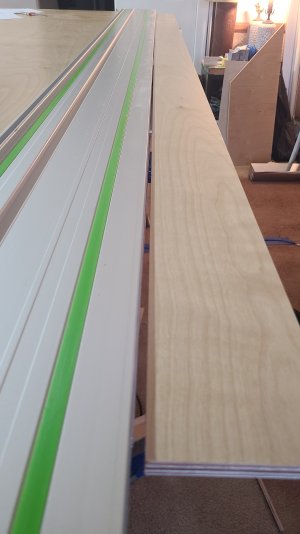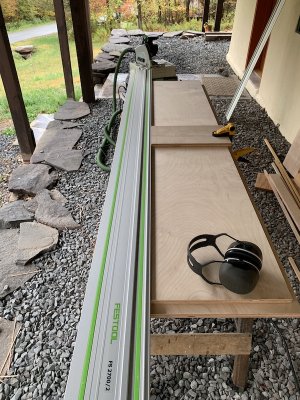makpacman
Member
- Joined
- Mar 21, 2023
- Messages
- 71
Does anyone know why plywood rips may come out curved? Initially I thought it may be due to uneven moisture content near the edge of the sheet but a recent batch of cuts toward the center of a sheet left me doubting that.
This image shows a fresh rip off the side of a 12mm sheet after an initial 5mm edge trim. When I flip the piece over, the center of the concave curve is 5mm off the perfectly straight sheet and guide rail.
This happened last night with some 18mm prefinished ply when cutting the same 3.5 inch rip using that material.
Equipment used: TSC55 KEB, clean, newish, stock thin kerf 1.8mm multipuropse 42T blade, cut at speed 6 and a blade depth 2mm deeper than the plywood.

This image shows a fresh rip off the side of a 12mm sheet after an initial 5mm edge trim. When I flip the piece over, the center of the concave curve is 5mm off the perfectly straight sheet and guide rail.
This happened last night with some 18mm prefinished ply when cutting the same 3.5 inch rip using that material.
Equipment used: TSC55 KEB, clean, newish, stock thin kerf 1.8mm multipuropse 42T blade, cut at speed 6 and a blade depth 2mm deeper than the plywood.


